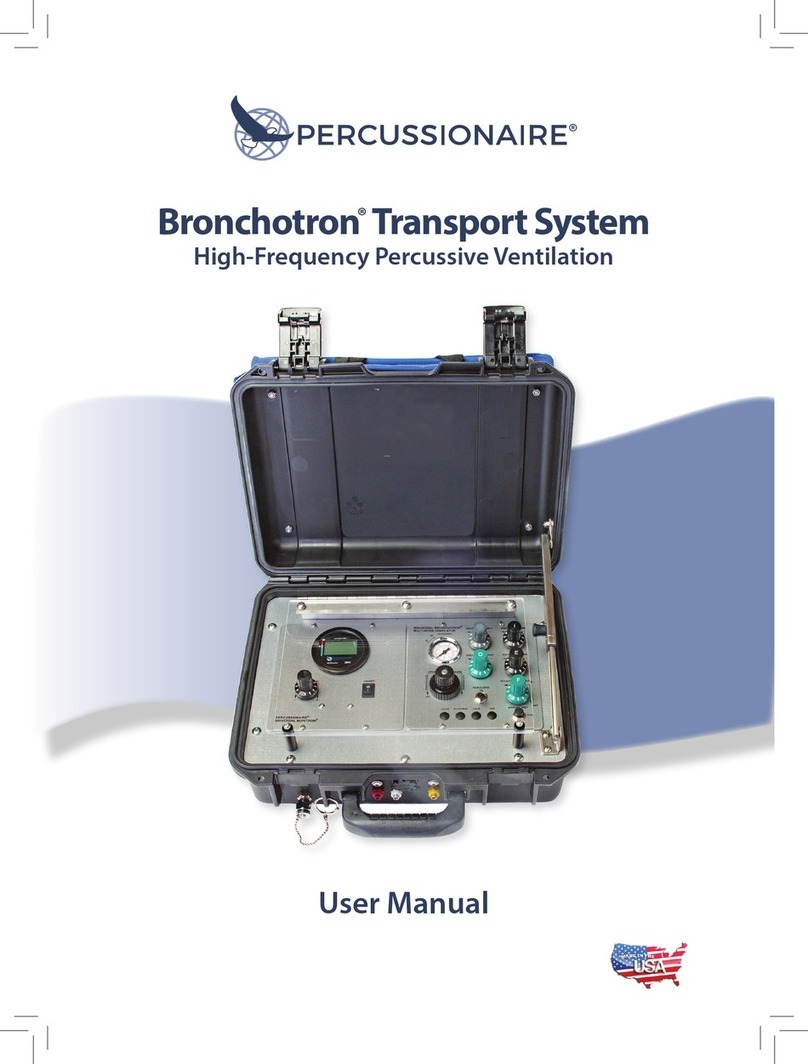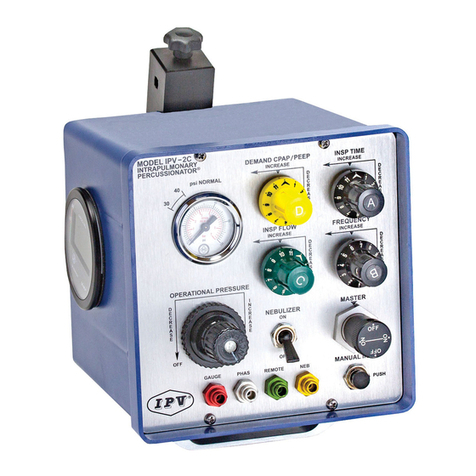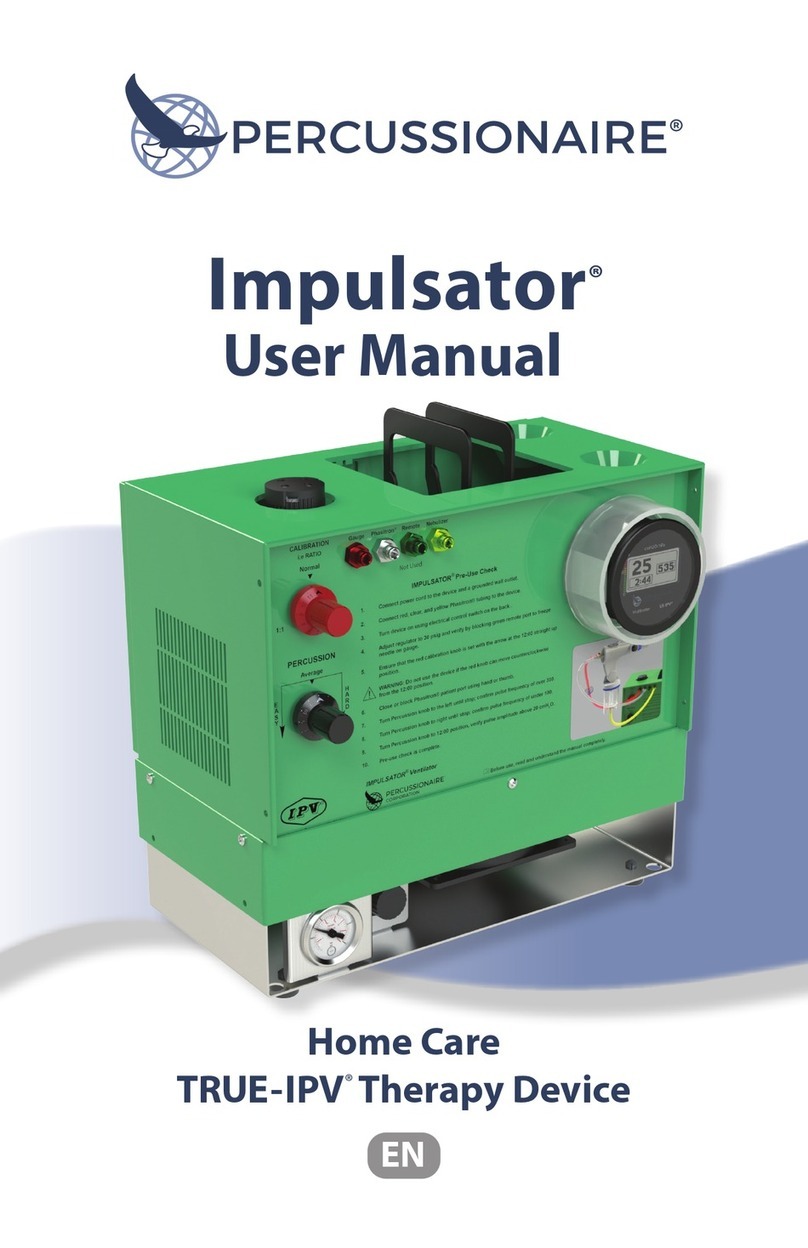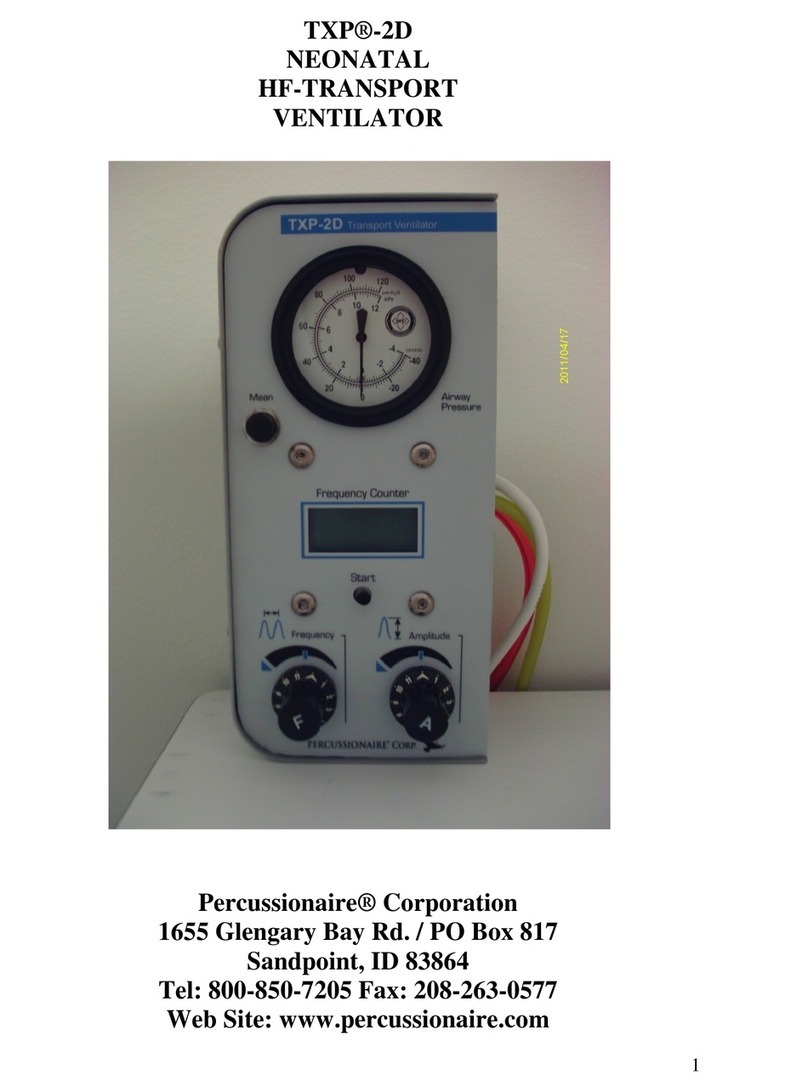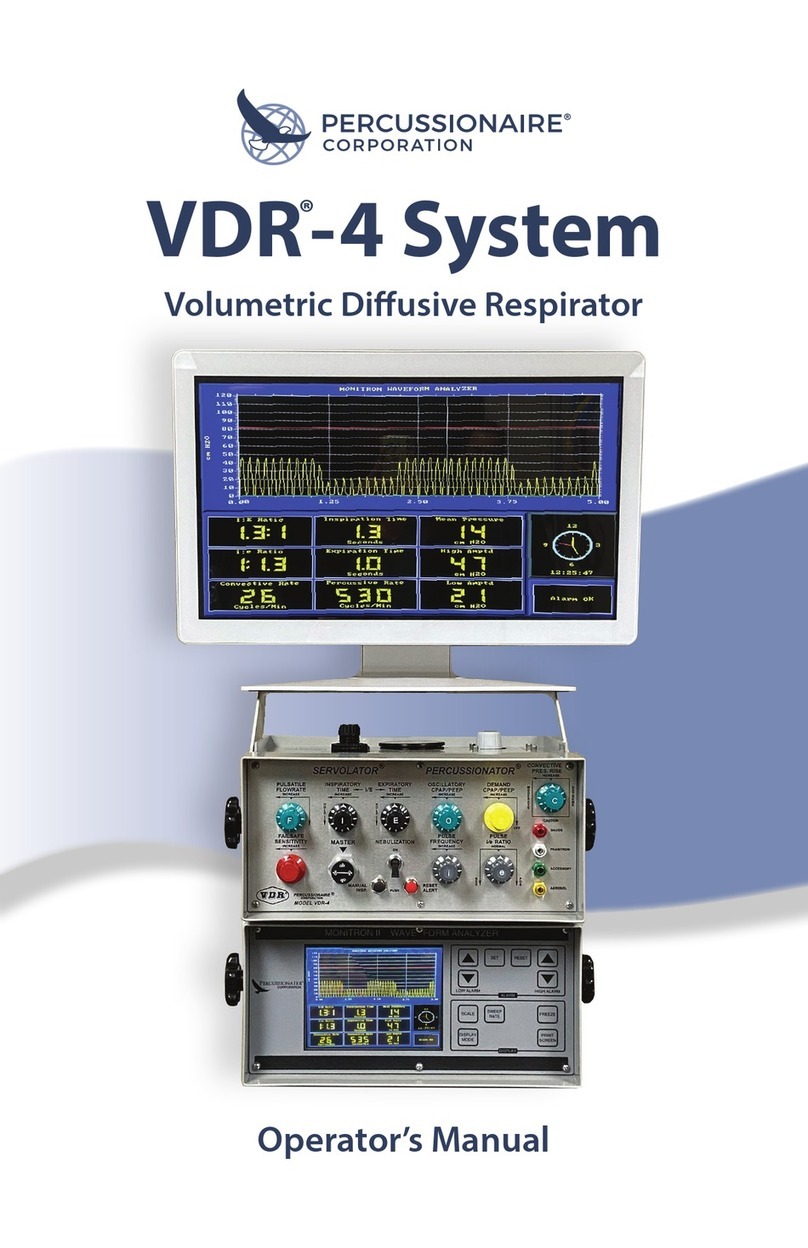
Table of Contents
Chapter 1: Introduction Introduction TXP™5............................................................. 1
High Frequency Percussive Ventilation.......................................................... 1
Phasitron® Breathing Circuit A50606-TXP .................................................... 1
Eects of HFPV ....................................................................................................... 2
Document Symbols .............................................................................................. 3
Warnings and Cautions........................................................................................ 4
Warnings .......................................................................... ..................... 4
Cautions .................................................................................................. 5
Chapter 2: Intended Use ..................................................................................................... 6
Indications for Use................................................................................................. 6
Patient Population................................................................................................. 6
Absolute Contraindications ............................................................................... 6
Relative Contraindications.................................................................................. 6
Possible Adverse Reactions................................................................................ 6
Physiological Benets of HFPV.......................................................................... 6
Clinical Limitations/Restrictions ...................................................................... 7
Chapter 3: System Description ........................................................................................ 8
Frequency Control Knob ................................................................................... 8
Amplitude Control Knob .................................................................................... 8
Tubing Connectors................................................................................................ 8
Percussionaire® Digital Multimeter (PDM) ................................................... 9
Power-On Self-Test (POST) Mode ........................................................... 9
Wake Mode . .................................................................................................10
Active Mode ................................................................................................10
Report Mode ...............................................................................................11
Sleep Mode ...................................................................................................12
Fault Mode ....................................................................................................12
Chapter 4: Setup...................................................................................................................13
Percussionaire®Digital Multimeter (PDM) Setup.....................................13
Controller and Stand ..........................................................................................13
DISS Gas Connection ..........................................................................................13
Mounting to Pole/Post.......................................................................................14
Adjusting Clamp Range and Tension............................................................14
Mounting to Rail...................................................................................................14
Phasitron® A50606-TXP Assembly .................................................................15
Connect Tubing Harness ...................................................................................15
Congurations ......................................................................................................16
Intubated Patient with Phasitron® ........................................................16
Standard Circuit ...........................................................................................16
Optional PEEP Valve ...................................................................................16
Optional Secondary Filters ......................................................................16
